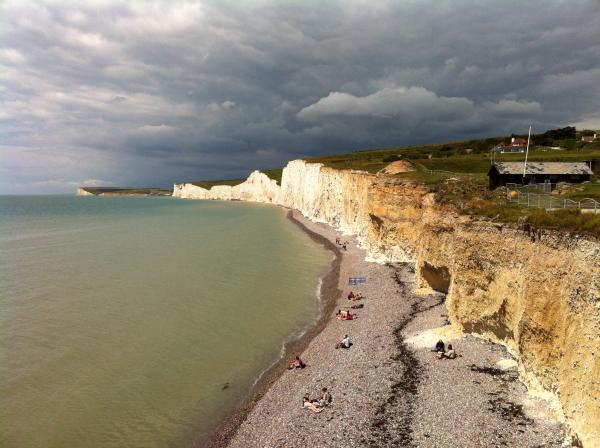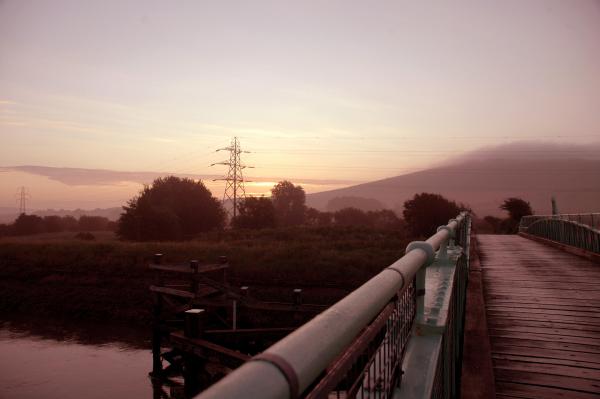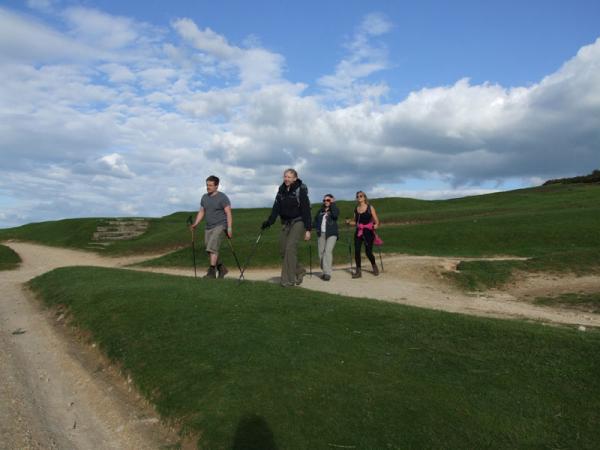Doing an Action Medical Research Overnight PLOD, a staff team perspective
Guest post written by Grant Ellis.
Each year, a gallant staff team from Action Medical Research bravely take on the PLOD - South Downs Way so who better to ask about the overnight walking event? Hopefully this will convince more people that they can do it too.
Firstly, let’s start by saying that a PLOD is a brilliant experience but exhausting. You will feel absolutely shattered when you finish but the sense of achievement will be such that you will want to do another one despite saying at various times during the PLOD that this will be the last time.
At first you may think that a 40 mile walk (some of the other walks are 50km) can’t be that difficult. A running event such as a marathon is deemed to be more exhausting than a mere walk? How hard can it be? What could be better than a casual stroll?
Photo from PLOD - South Downs WayPLOD’s are not easy in fact quite the opposite. Having done a few marathons between us and many many running events, the staff team all agree that a PLOD is harder than a marathon.
The name ‘PLOD’ is therefore somewhat misleading but let’s not dwell on this. With the right preparation they are the most rewarding experience, a fabulous team builder and a celebration of our fabulous British countryside.
So what makes us qualified to talk about PLOD’s? The same staff team has competed in the PLOD - South Downs Way for the past 6 years, walking as back markers behind the last group to ensure that everyone gets round safely. Between us we have completed 20 PLOD’s and have learned a few lessons in that time, sometimes the hard way!
Here are a few words of wisdom based on our experiences. These are not to be taken as medical advice. They are merely based on observations and previous PLOD’s through the years.
1. Make sure you wear suitable footwear
All of the PLODS are slightly different terrain. The PLOD - South Downs Way for example is a mixture of scraggy terrain to start but then there are long stretches of natural paths and grassy hills. These changes combined with the amount of time that you will be on your feet mean that traditional firm walking boots are not necessarily the best fit.
We have found lighter ‘hiking’ styled shoes to be more suitable especially in the second half of the charity hike. They are strong but more flexible and lend themselves to far longer distances. Trainers are not really suitable at all as they are far too flexible and light. A ‘hiking’ or ‘trail’ shoe is somewhere between a trainer and a walking boot and provides the support that you will need but also offers the flexibility required for long time on your feet.
Some of us used to start in traditional walking boots and then change in to lighter shoes for the second half but this meant taking our shoes off. This is not advisable (see next point).
2. Resist the temptation to take your shoes off
You will be on your feet a very long time and you feet will therefore swell especially in the hot weather that we often get on the PLOD. You will want to take your shoes off when you get to a checkpoint especially if you suspect you have blisters.
Try to resist this. Wearing good walking socks will help prevent blisters. Taking your shoes off at a checkpoint will make it much harder to put them back on which in turn make them far more uncomfortable for the next stretch. Take it from us, we speak from experience. The most tempting time will be about 30 miles in to the PLOD when your feet will be aching. Remember that you will still have about 10 miles to walk. Taking your shoes off at the end is one of the most rewarding parts of the whole experience.
3. Carry just what you need and no more
Forty miles sounds a long way and it is. You will think that you need to carry all manner of things just in case you need them. Remember that you will not be walking any more than about eight miles between any two checkpoints and that your driver will have everything you will need. Whilst it is important to have the basics of water, suncream, maybe some fruit or a bar, you are unlikely to need much more.
We regularly see people carrying huge amounts of stuff in their bags for the entire walk. They are actually making it even harder for themselves.
Photo from PLOD - South Downs Way4. Don’t spend too long at drink stops
As a staff team we always walk as back markers behind the slowest teams. We therefore take our breaks for the same amount of time as the back teams and have observed that this can sometimes be a very long time. So long in fact that it has actually prevented some teams from being able to complete the challenge as we sometimes have to stop people from continuing the last phase or 2 in order to be safely complete by a certain time.
It is our experience that having a shorter break allows you to keep the pace going. Long breaks allow you to get comfortable which means that you relax and it is then harder to get going again.
We know that you are hurting and it is very attractive to sit back for a bit before going again but believe us when we say that you would be better off to keep going albeit slower if need be.
As a rule we try not to spend any longer than 10-15 minutes at any stop. This gives you enough time to fill up water bottles, grab food, drop off unwanted or pick up needed clothing with your driver and take a toilet break.
5. Remember to refuel correctly
You will be walking a long way and it is likely to be hot (the PLOD - South Downs Way regularly hits 30 degrees in the afternoon) so you will need to refuel. We are not nutritionists but we know from experience the need to eat regularly and properly. You will get breakfast but you must remember to eat more calories than you would normally eat in order to make up for the energy that you are using up. The average man requires 2500 calories on a normal day. When doing such a prolonged amount of exercise they will also need to replace the energy that they have used up. This is hard to do as you will not want to spend lots of time eating at the checkpoints (see last point). It is therefore important to choose the right food types that will fill you up correctly but can also be consumed on the go.
6. Drink it in and enjoy it
There will be times when you are walking that you will wonder why you ever signed up. This is likely to be at the beginning when it is dark but as the sun comes up, you will be rewarded with stunning countryside and the feeling that you are really alive. Make sure that you look up and enjoy it. Not many people ever experience seeing the sun come up while walking along some of the most stunning British countryside.
Image from the PLOD - Cotswold Way 2012It is sometimes too easy to get you head down and just put one foot in front of the other, especially towards the end. This will get round but looking up from time to time will make it easier. When you enjoy something you do it well.
Good luck and look out for the Action Medical Research staff PLOD team. We’ll be at the back!




